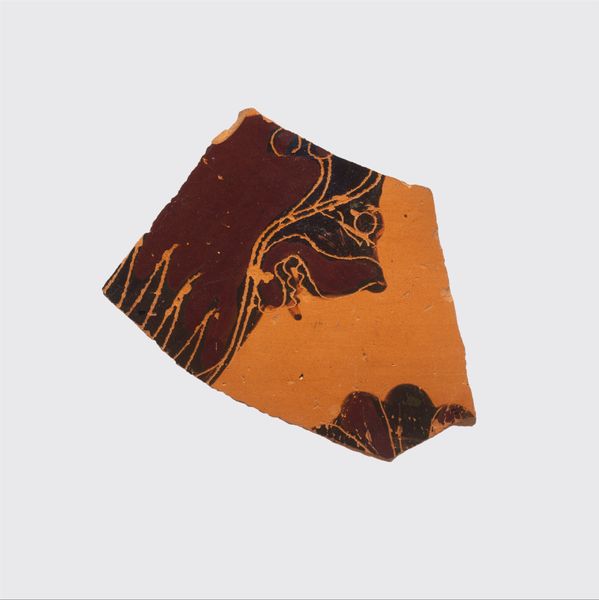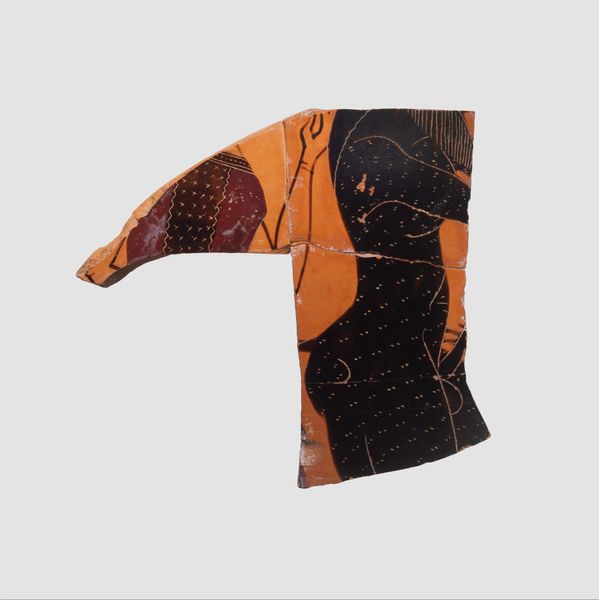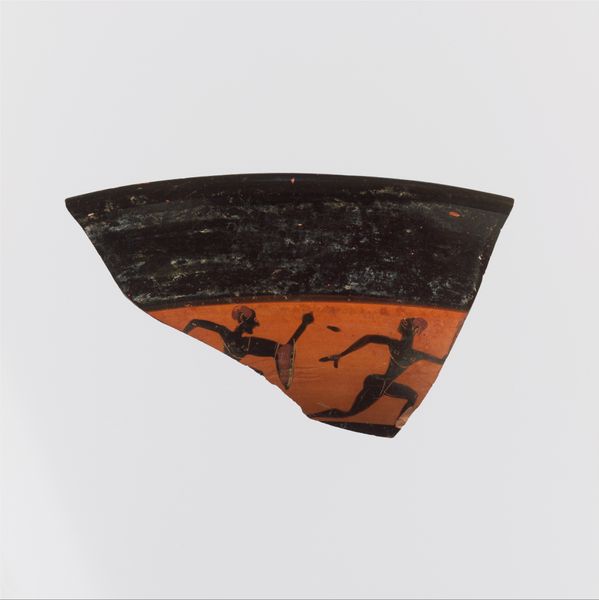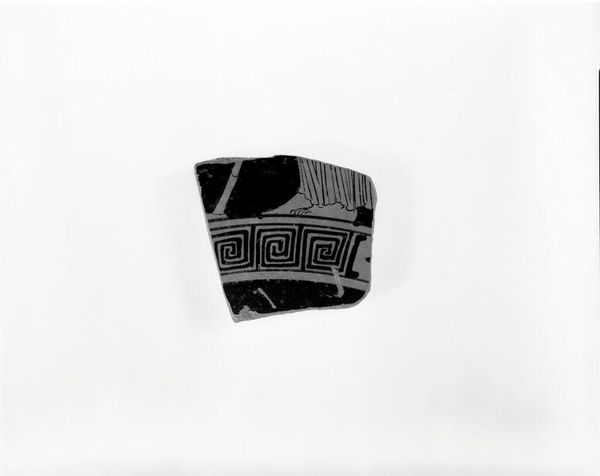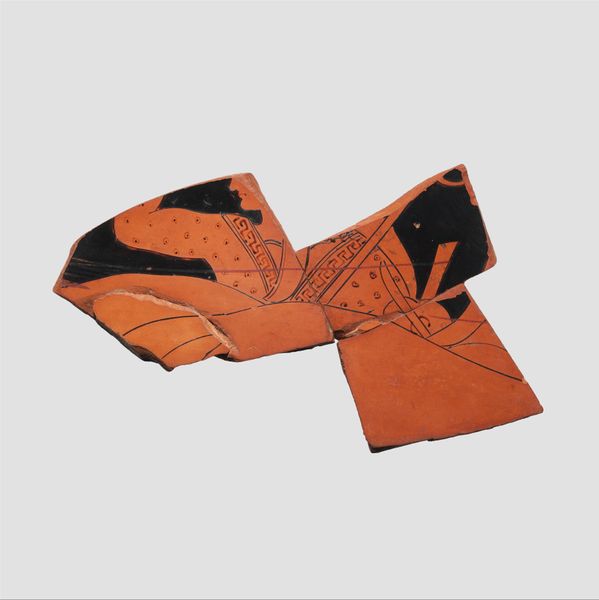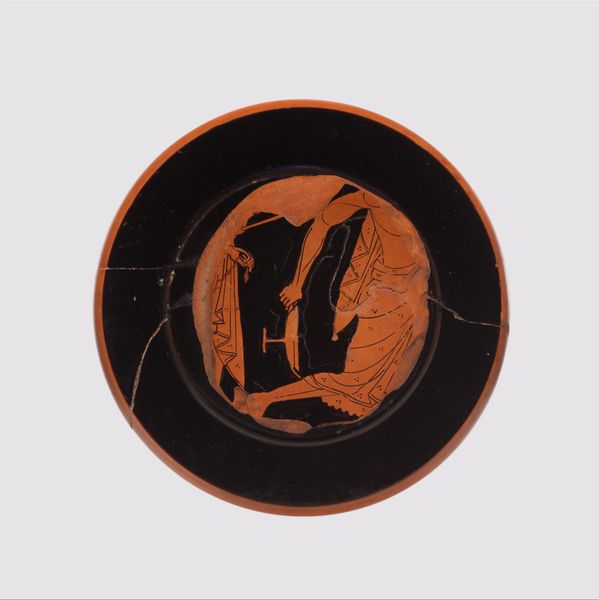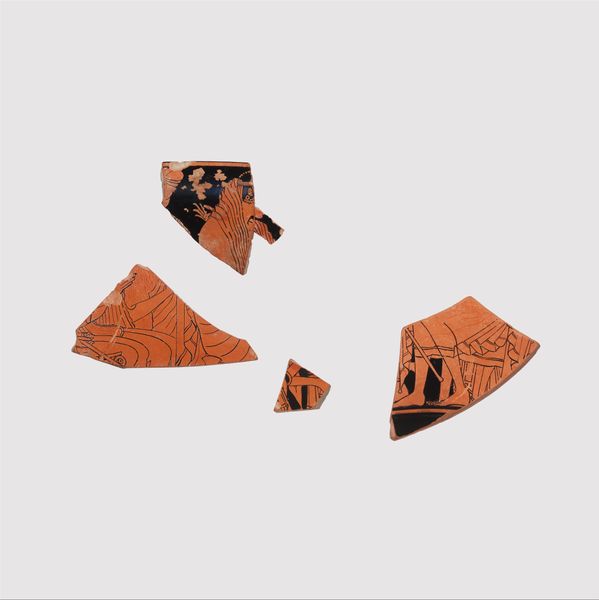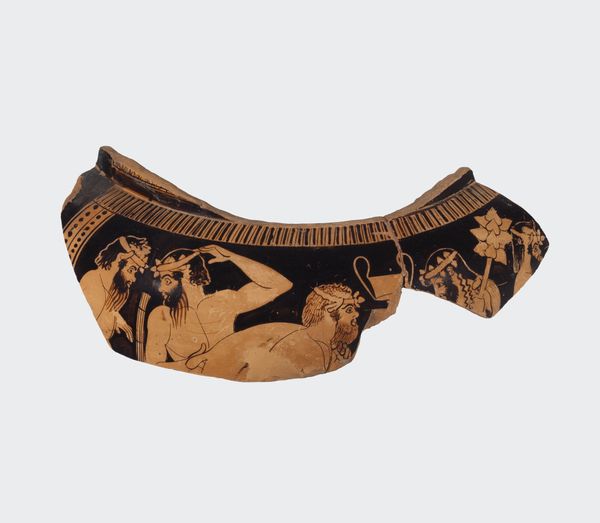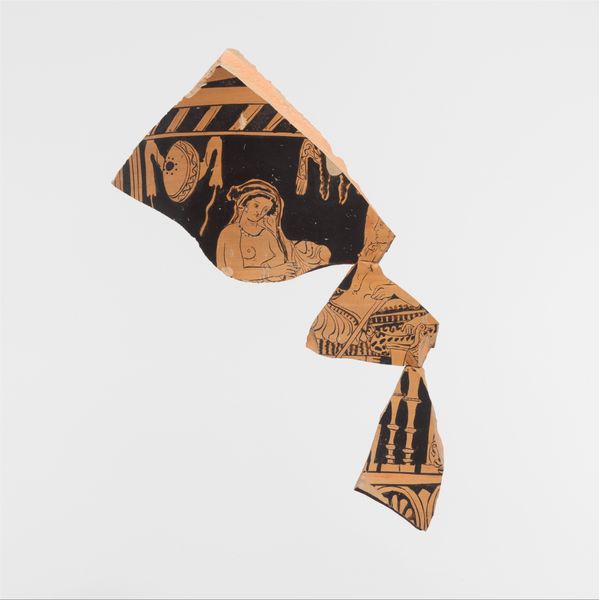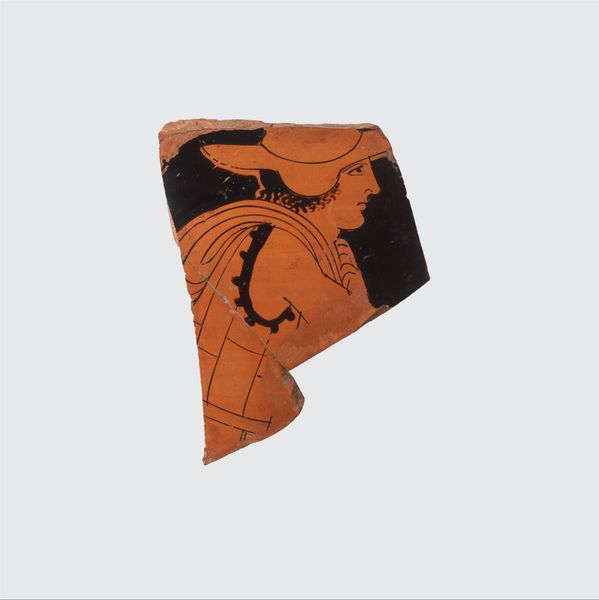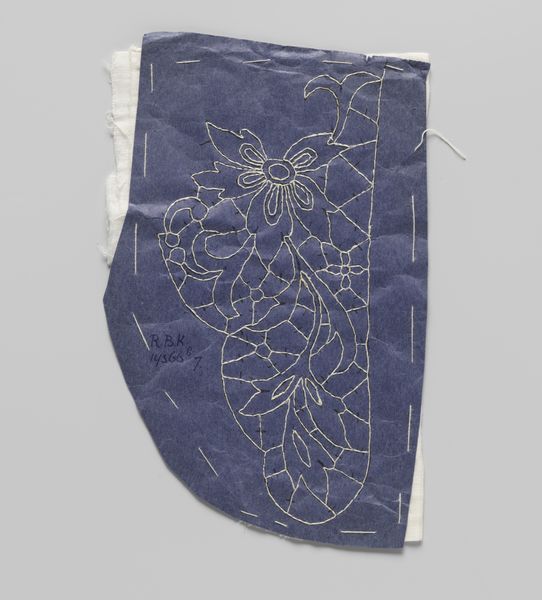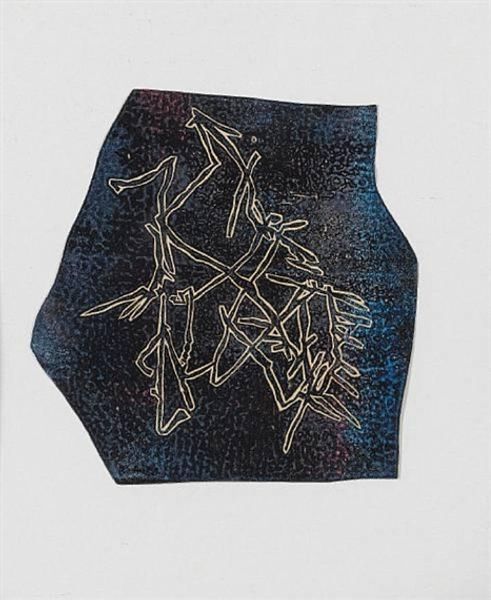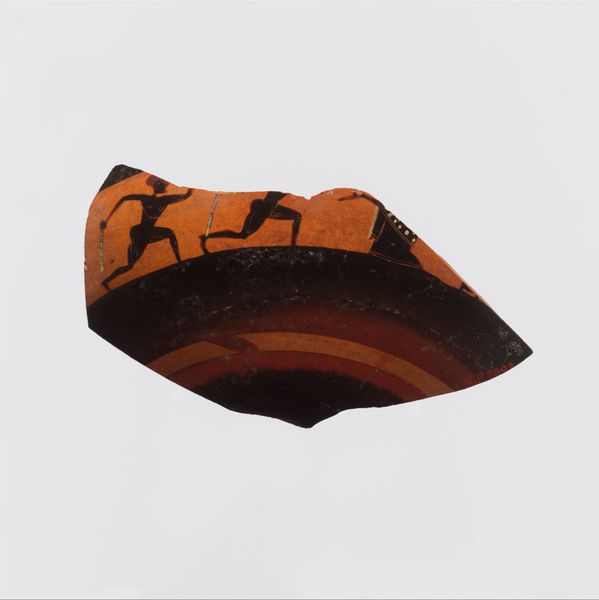
drawing, ceramic
#
portrait
#
drawing
#
greek-and-roman-art
#
ceramic
#
vase
#
figuration
#
roman-art
#
ancient-mediterranean
Dimensions: Overall: 3 1/8 x 3 5/8 in. (7.9 x 9.2 cm)
Copyright: Public Domain
Editor: So, here we have a fragment of a terracotta neck-amphora, a jar made around 515 BC by Euphronios. Even in this small piece, the detail is impressive! The figures are quite captivating, and the contrast between the black and terracotta really pops. What’s your take on it? Curator: Considering this fragment's function within the larger vessel offers compelling insight. We're viewing a product of labor – from the potter who shaped the clay to the painter who meticulously applied the slip. Consider the potter's wheel, the source of the clay, the firing process – all contributing to its creation and social utility. How do you think the means of production impacted the aesthetics? Editor: That's an interesting point! I hadn’t considered how the physical process influenced the design itself. I suppose the limitations of working with clay might have dictated certain stylistic choices. The lines and forms seem almost simplified by the medium. Curator: Exactly. And more than that, this isn't just art; it's craft elevated. It suggests a social hierarchy with access to resources like fine clay and skilled labor, ultimately dictating who could consume wine stored in these amphora. Does the fact that this is *only* a fragment change our perspective? Editor: Definitely. It makes you think about all the lost pieces, both literally and metaphorically. It's like we’re only seeing a small part of a much bigger picture, both in terms of the vase itself and the society that produced it. Perhaps a symbol of our fractured understanding? Curator: Perhaps. Its very existence tells us of trade routes, economic systems and modes of distribution. Reflect on that, the next time you appreciate classical artwork: it's far more than decorative or pretty, it represents labour and capital frozen in time. Editor: I see the amphora through new eyes. Curator: As do I. Focusing on its process reminds us that every art piece emerges from specific actions, which reveal the intricacies of ancient workshops and societies.
Comments
No comments
Be the first to comment and join the conversation on the ultimate creative platform.
